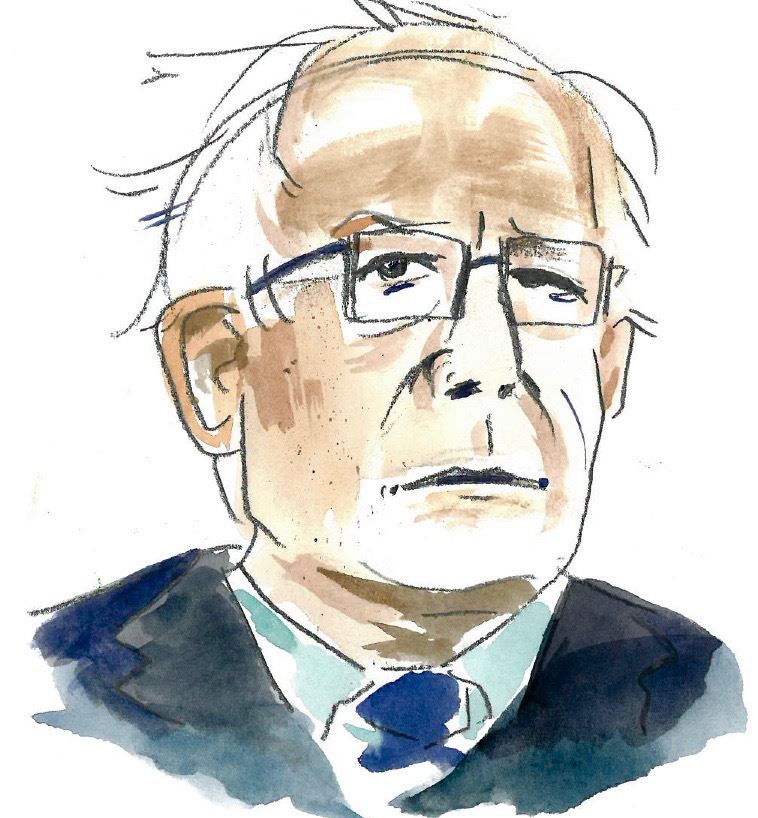Over forty years ago, President Lyndon B. Johnson declared a “War on Poverty” in his state of the union address. This war emphasized education as the remedy to America’s economic hardships. Critics, like Hyman Minsky, worried from the beginning that this would not be enough. As explained in some of his writings collected in Ending Poverty: Jobs Not Welfare, Minsky believed that without a focus on providing jobs the war would end in failure. In 2016 it is hard to say the poverty situation in America has improved drastically. Inequality has gotten worse, the minimum wage has stagnated, and food and health care prices have risen faster than inflation. I argue in my master’s thesis that while education has been shown to improve individual employment chances at higher wages, it is a fallacy of composition to assume those results can apply for everyone.
Trying to push all of our youth through high school will not guarantee them jobs, especially in today’s economy where we are far from tight labor markets. Minsky argued that programs should be designed which hold the promise of a useful and productive life for our high school dropouts. In my view, this would help students learn different skills that can’t be acquired sitting at a desk. Perhaps even more importantly, having an income would enable many students to either stay in or return to school, as requiring a student to forgo an income for four to eight years is just not realistic for many families living in poverty. College graduates are competing for jobs that do not require college educations. Our youth needs a more comprehensive “War on Poverty” than a focus on receiving a formal education.

Senator Bernie Sanders and Representative John Conyers have introduced the bill Employ Young Americans Now, which would provide $5.5 billion in funding to create jobs for disadvantaged youth. This seems like a better solution for our youth living in poverty. Employment is connected with a slew of benefits that education and welfare have not provided. Employment is shown to reduce incidence of mental illness, reduce criminal activity, and it allows production of useful goods and services. In my thesis I modeled EYAN and demonstrated that it will provide 500,000 jobs to young disadvantaged youth. This gives a young person a job in 11% of families with unemployed disadvantaged youth. My results suggest that if the bill were expanded 10x, we could provide a job for every young person living in poverty at a cost of $50 billion.
One issue with EYAN is finding jobs suitable for young Americans that do not yet have high school degrees. One possibility is to pay EYAN participants for raising young children in their families, since this is a responsibility that already exists for many youth living in families in poverty. Early childhood education has been shown to have great returns. Another prospect would be something along environmental lines. In the National Youth Administration as a part of Roosevelt’s New Deal he had youth plant trees, forming his “Tree Army.” This is another job that any able bodied youth can do. Jobs offered by EYAN do not necessarily have to be profitable jobs. The bill specifies that they could help the nonprofit sector with jobs volunteers are already doing for free. The nice part about this bill is that it allows local communities to determine who to hire and what type of jobs to do, as Minsky foresaw for a Job Guarantee program. That is, it is federally funded but locally administered. It would thus be up to individual communities to determine how they can best be benefited.

In a previous article I have discussed the role that college should be playing in today’s workforce and how education, as it is currently administered, has actually increased racial and class inequalities. In tight labor markets racial inequality has been shown to decrease, while with loose labor markets we have seen racial discrimination get worse. Economist Sandy Darity has shown that job prospects for black high school graduates are worse than for white high school dropouts. As I have discussed earlier, expanding the education system fails to provide income for all of our youth, and it does not payoff the same for those from low income families. Automation is on the rise, and business does not have enough demand to justify hiring more workers. We can thus not rely on the private sector to get us to full employment, and should push our legislators to create more local public jobs. While we can probably expect a huge infrastructure bill with our next president, if it’s anything like the American Recovery and Reinvestment Act it is unlikely this will help out low skill workers. With proper targeting, EYAN could hire 22% of our high school dropouts nationwide. This is why I believe in this type of policy, and would love to make it happen.
Reducing poverty and inequality will be hard, but I think a new focus on employment beyond education is the right way to do it. Argentina has had a direct government job creation program, Jefes y Jefas, which was modeled after Minsky’s ELR proposal and showed a lot of promise. It is therefore reasonable to see how such a program would work within the States, and EYAN offers us this chance. I wish I knew how to get it through Congress.
This post is an adaptation of my master’s thesis, and you can find the whole argument here. Comments and feedback are appreciated.

Great article.
Where you state ‘In tight labor markets racial inequality has been shown to decrease’ I am not sure you have hyperlinked to the intended paper – which is relevant to discrimination but I cannot see any particular evidence supporting this specific claim (which is uncontroversial and supported strongly elsewhere). Perhaps I just missed the relevant section though.
I sourced it in my thesis, but could not find a nice article to link to for that research. You’re right the hyperlink is off though, I’ll fix it. 🙂 You could checkout Robert Cherry’s 1999 paper in The Review of Black Political Economy: http://link.springer.com/article/10.1007/s12114-999-1003-6
Thanks for the quick reply and the paper. I assume you have seen this:
https://www.washingtonpost.com/posteverything/wp/2016/08/29/fed-up-with-the-absence-of-full-employment/?utm_term=.76476380c167
The draft paper linked inside is very good.
It is very good! I particularly enjoyed this part from Bernstein:
“The challenges of deep poverty, isolated neighborhoods, and the criminal justice
system: It is important not to conclude that full employment can reach everyone who is
underemployed or disconnected from the labor market. Place-based research identifies
neighborhoods that remain “job deserts” even at full employment. Those stuck in deep
poverty often are beset by a variety of problems and deep skill deficits that create steep
barriers to work. Similar barriers confront the millions of people with criminal records trying
to get into, or back into, the labor market” and why in my thesis I argue that we can target EYAN jobs to neighborhoods like this!
Thanks so much!